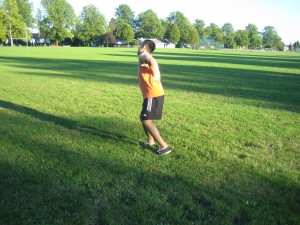Sciatica is pain felt in the lower extremity caused by irritation of the sciatic nerve. It is characterized by pain in the lumbar area or low back, behind the thigh and spreads down below the knee.
The sciatic nerve is the largest nerve in the body. It starts from the nerve roots in the lumbar spinal cord in the low back and spreads to the buttock area and nerve endings to the lower limb.
Causes of sciatica
- Degenerative disc disease – the breakdown of discs which functions as cushions between the vertebrae
- Lumbar spinal stenosis – the spinal canal in the lower back becomes narrow.
Pain from the buttocks that spreads to the back of thigh into the lower leg and outside area of the foot. - Spondylolisthesis – a condition where one vertebra slips forward over the other one.
- Spasms of muscles in the back or buttocks
- Pregnancy
- Overweight
- Lack of exercises
- Wearing high heels
- Sleeping on a mattress that is too soft.
Symptoms
- Low back pain
- Pain from the buttocks that spreads to the back of thigh into the lower leg and outside area of the foot.
- Pain from the side of the thigh that spreads to the front of the lower leg and down into the big toe.
- Constant pain on one side of the leg or buttocks
- Sharp pain that becomes lessened when lying down or walking. Pain becomes worse when standing or sitting.
- “Pins-and-needles” sensations
- Numbness or a prickling sensation felt down the leg
Treatment
- Take plenty of rest at least for 2 weeks for fast healing of the condition.
- Drink plenty of water to lessen the inflammation. Tissues of the spine contain plenty of water and staying hydrated strengthens the structures.
- Use hot and cold therapy to relieve the inflammation and pain. Hot therapy relaxes tension in the muscles that compresses the sciatic nerve. Cold treatment lessens the swelling around the nerve and numbs the pain.
- Take the prescribed over-the-counter pain medications such as ibuprofen or naproxen to relieve the pain.
- Massage the affected area to relieve the pain and for fast healing of the condition especially if it is caused by muscle spasms. It releases tension, increases circulation and range of movement. Another alternative is performing trigger-point massage therapy at least once every day. Pain in the buttocks, lower back and side of the thighs are caused by trigger points in the gluteus medius and minimus muscles.
- Perform rehabilitation exercises with the help of a physical therapist to strengthen the abdominal and back muscles needed for proper posture and alignment.

